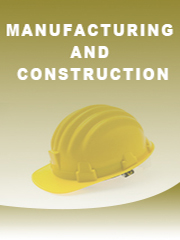Report overview
Dissolved Air Flotation (DAF) systems are designed to remove suspended solids (TSS), biochemical oxygen demand (BOD5), and oils and greases (O&G) from a wastewater stream.
This report aims to provide a comprehensive presentation of the global market for Dissolved Air Flotation (DAF) Systems, with both quantitative and qualitative analysis, to help readers develop business/growth strategies, assess the market competitive situation, analyze their position in the current marketplace, and make informed business decisions regarding Dissolved Air Flotation (DAF) Systems. This report contains market size and forecasts of Dissolved Air Flotation (DAF) Systems in global, including the following market information:
Global Dissolved Air Flotation (DAF) Systems Market Revenue, 2018-2023, 2024-2029, ($ millions)
Global Dissolved Air Flotation (DAF) Systems Market Sales, 2018-2023, 2024-2029, (Units)
Global top five Dissolved Air Flotation (DAF) Systems companies in 2022 (%)
The global Dissolved Air Flotation (DAF) Systems market was valued at US$ 121.4 million in 2022 and is projected to reach US$ 138.6 million by 2029, at a CAGR of 1.9% during the forecast period. The influence of COVID-19 and the Russia-Ukraine War were considered while estimating market sizes.
Global Dissolved Air Flotation (DAF) Systems key players include KWI Group, Xylem, Evoqua Water Technologies, Purac, World Water Works, etc. Global top five manufacturers hold a share over 10%.
North America is the largest market, with a share about 30%, followed by Asia Pacific, and Europe, both have a share about 60 percent.
In terms of product, Less Than 20 m?/hour is the largest segment, with a share over 50%. And in terms of application, the largest application is Industrial Application, followed by Municipal Application, Drinking Water Application, etc.
We surveyed the Dissolved Air Flotation (DAF) Systems manufacturers, suppliers, distributors and industry experts on this industry, involving the sales, revenue, demand, price change, product type, recent development and plan, industry trends, drivers, challenges, obstacles, and potential risks.
Total Market by Segment:
Global Dissolved Air Flotation (DAF) Systems Market, by Type, 2018-2023, 2024-2029 ($ Millions) & (Units)
Global Dissolved Air Flotation (DAF) Systems Market Segment Percentages, by Type, 2022 (%)
Less Than 20 m?/hour
20-50 m?/hour
More Than 50 m?/hour
Global Dissolved Air Flotation (DAF) Systems Market, by Application, 2018-2023, 2024-2029 ($ Millions) & (Units)
Global Dissolved Air Flotation (DAF) Systems Market Segment Percentages, by Application, 2022 (%)
Industrial Application
Municipal Application
Drinking Water Application
Others
Global Dissolved Air Flotation (DAF) Systems Market, By Region and Country, 2018-2023, 2024-2029 ($ Millions) & (Units)
Global Dissolved Air Flotation (DAF) Systems Market Segment Percentages, By Region and Country, 2022 (%)
North America
US
Canada
Mexico
Europe
Germany
France
U.K.
Italy
Russia
Nordic Countries
Benelux
Rest of Europe
Asia
China
Japan
South Korea
Southeast Asia
India
Rest of Asia
South America
Brazil
Argentina
Rest of South America
Middle East & Africa
Turkey
Israel
Saudi Arabia
UAE
Rest of Middle East & Africa
Competitor Analysis
The report also provides analysis of leading market participants including:
Key companies Dissolved Air Flotation (DAF) Systems revenues in global market, 2018-2023 (Estimated), ($ millions)
Key companies Dissolved Air Flotation (DAF) Systems revenues share in global market, 2022 (%)
Key companies Dissolved Air Flotation (DAF) Systems sales in global market, 2018-2023 (Estimated), (Units)
Key companies Dissolved Air Flotation (DAF) Systems sales share in global market, 2022 (%)
Further, the report presents profiles of competitors in the market, key players include:
KWI Group
Evoqua Water Technologies
FRC Systems
Benenv
Water Tecnik
Fluence
DAF Corporation
Hyland Equipment Company
WSI International
Toro Equipment
WesTech Engineering
Napier-Reid
MAK Water
VanAire
Kusters Zima
Aries Chemical
Wpl International
Nijhuis Water Technology
Purac
World Water Works
Xylem
Outline of Major Chapters:
Chapter 1: Introduces the definition of Dissolved Air Flotation (DAF) Systems, market overview.
Chapter 2: Global Dissolved Air Flotation (DAF) Systems market size in revenue and volume.
Chapter 3: Detailed analysis of Dissolved Air Flotation (DAF) Systems manufacturers competitive landscape, price, sales and revenue market share, latest development plan, merger, and acquisition information, etc.
Chapter 4: Provides the analysis of various market segments by type, covering the market size and development potential of each market segment, to help readers find the blue ocean market in different market segments.
Chapter 5: Provides the analysis of various market segments by application, covering the market size and development potential of each market segment, to help readers find the blue ocean market in different downstream markets.
Chapter 6: Sales of Dissolved Air Flotation (DAF) Systems in regional level and country level. It provides a quantitative analysis of the market size and development potential of each region and its main countries and introduces the market development, future development prospects, market space of each country in the world.
Chapter 7: Provides profiles of key players, introducing the basic situation of the main companies in the market in detail, including product sales, revenue, price, gross margin, product introduction, recent development, etc.
Chapter 8: Global Dissolved Air Flotation (DAF) Systems capacity by region & country.
Chapter 9: Introduces the market dynamics, latest developments of the market, the driving factors and restrictive factors of the market, the challenges and risks faced by manufacturers in the industry, and the analysis of relevant policies in the industry.
Chapter 10: Analysis of industrial chain, including the upstream and downstream of the industry.
Chapter 11: The main points and conclusions of the report.
